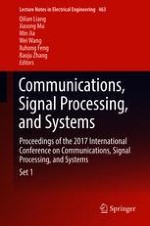2019 | Buch
Communications, Signal Processing, and Systems
Proceedings of the 2017 International Conference on Communications, Signal Processing, and Systems
herausgegeben von: Qilian Liang, Jiasong Mu, Min Jia, Prof. Wei Wang, Xuhong Feng, Baoju Zhang
Verlag: Springer Singapore
Buchreihe : Lecture Notes in Electrical Engineering
